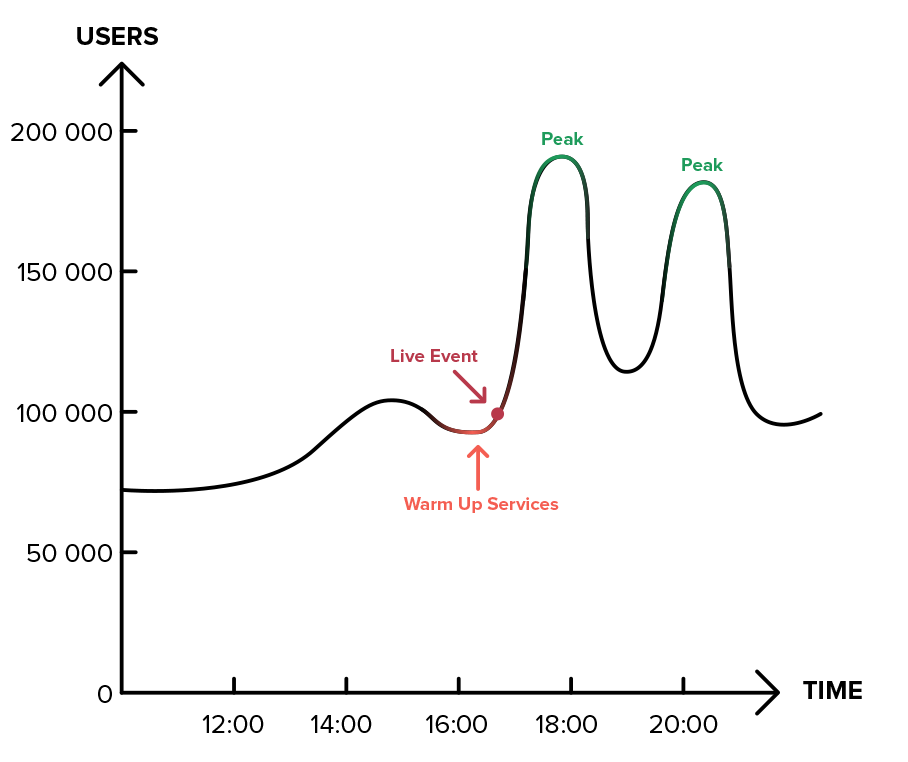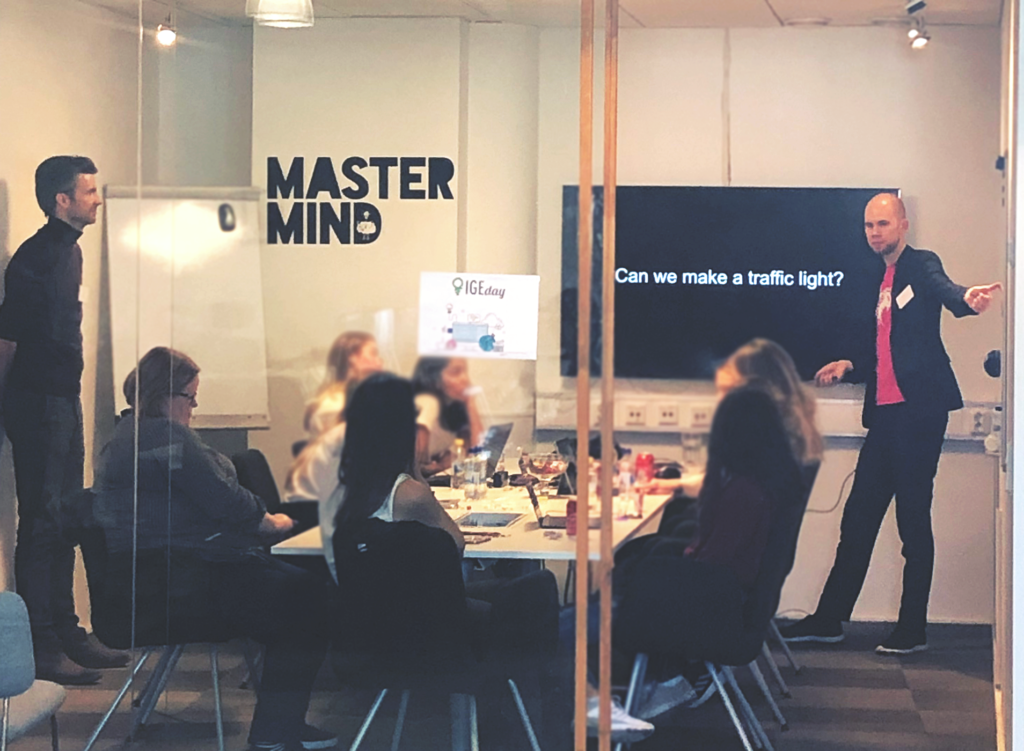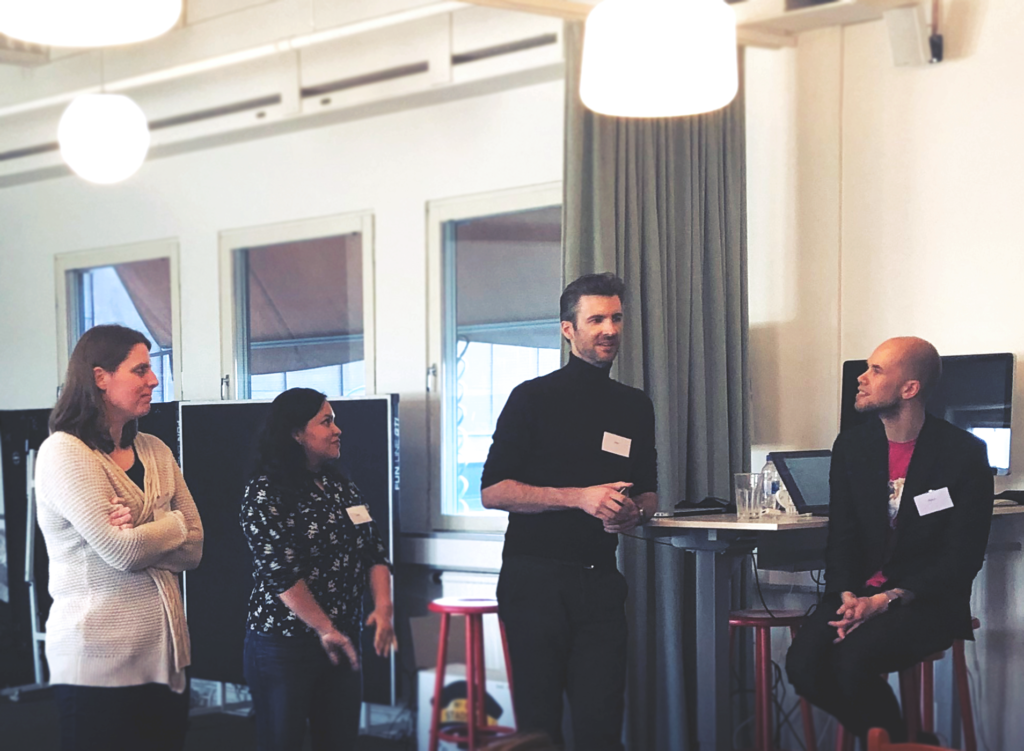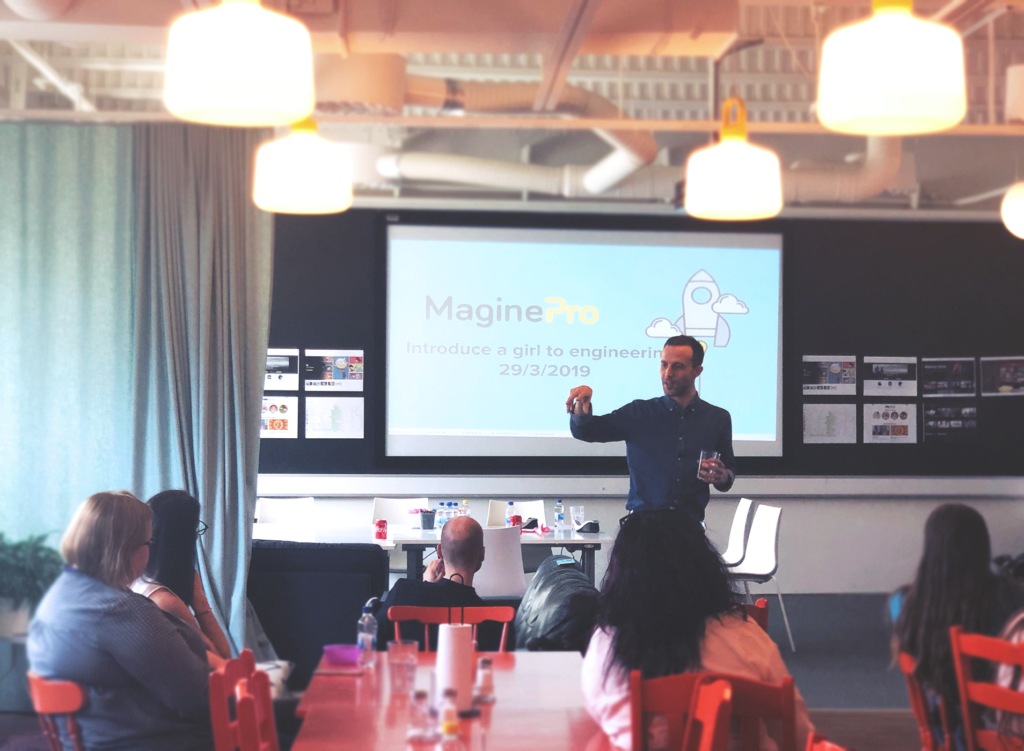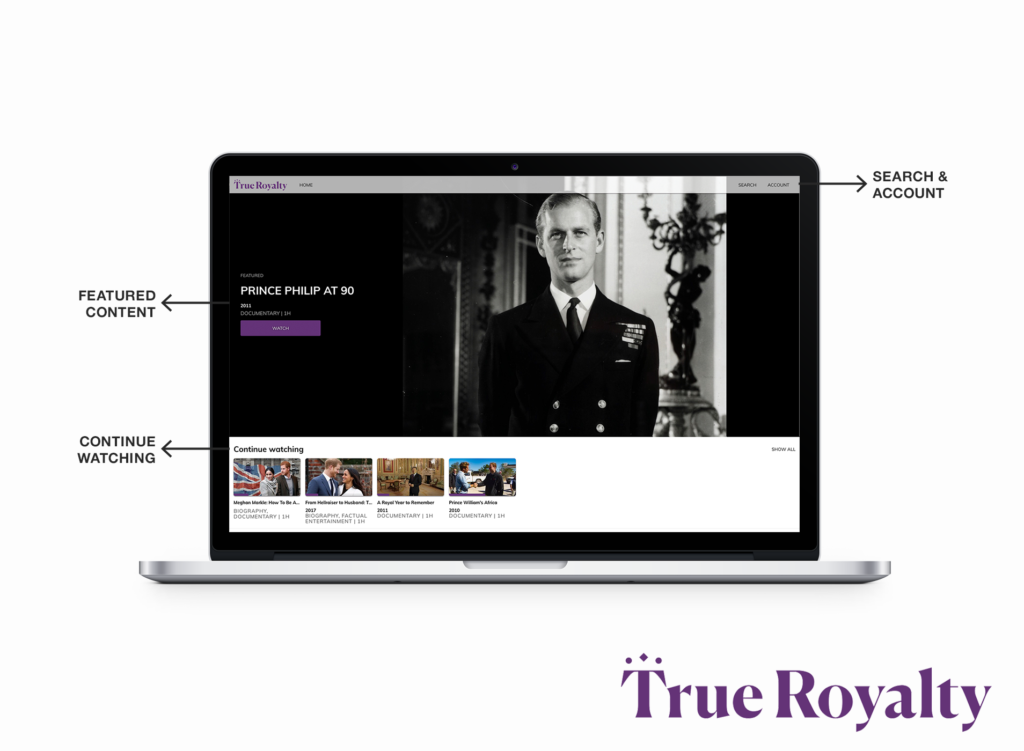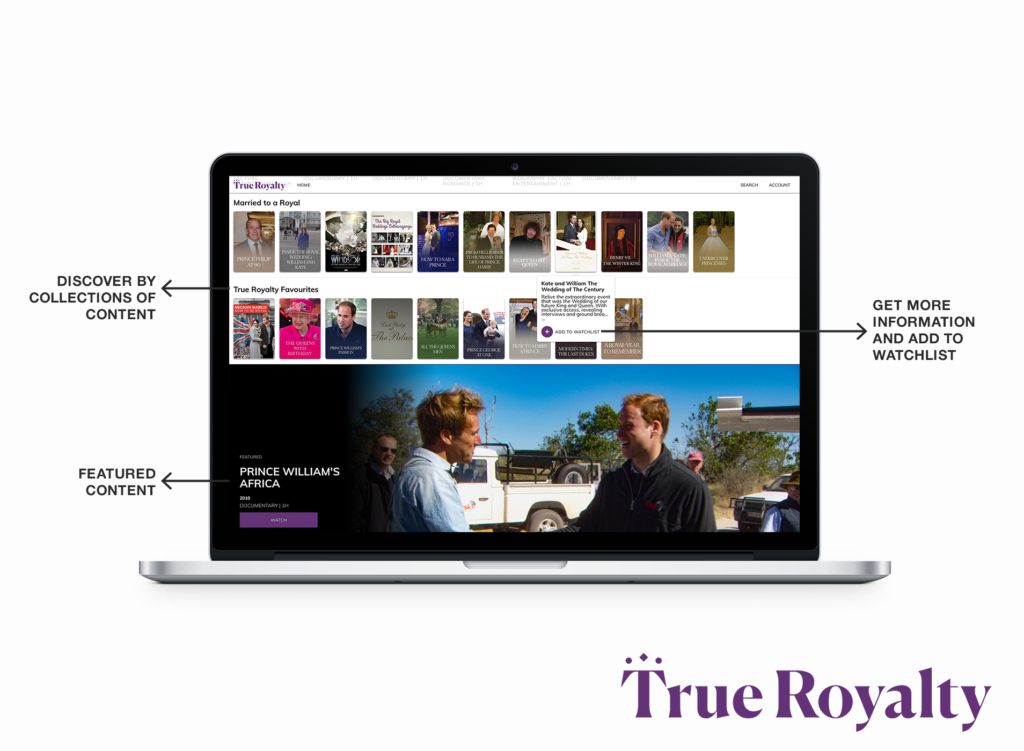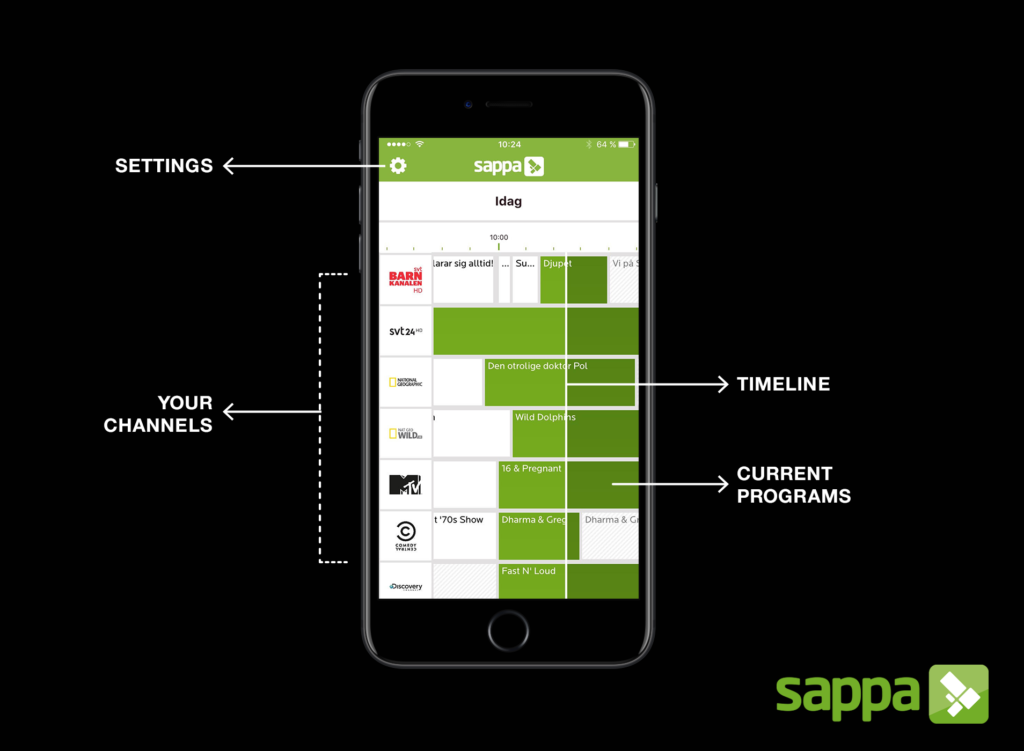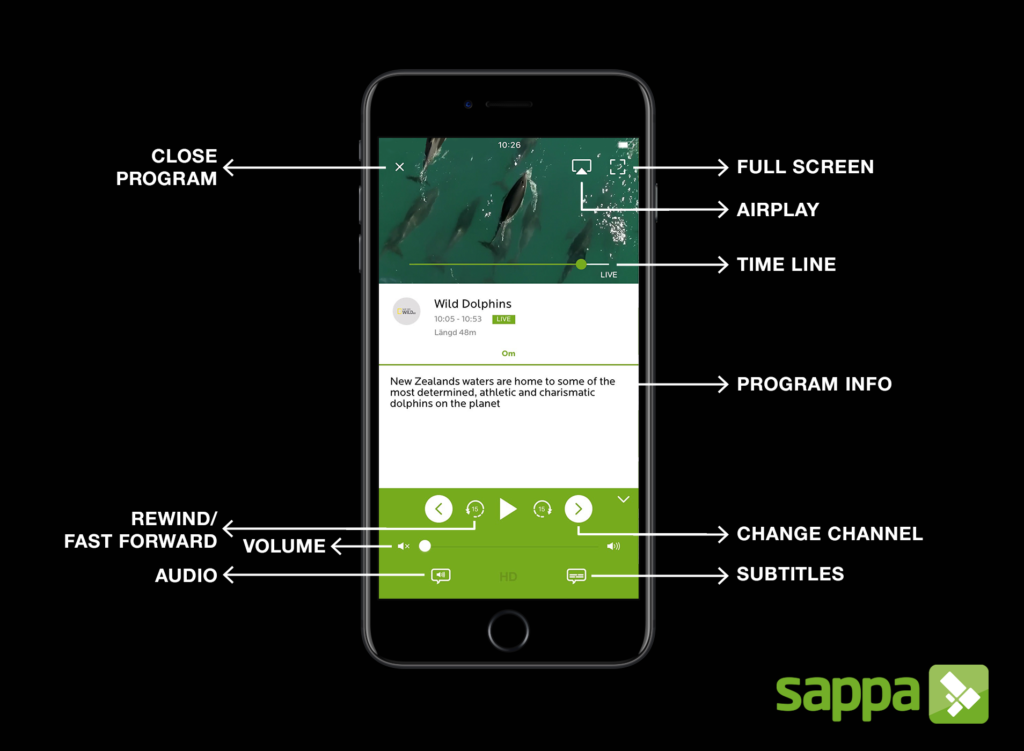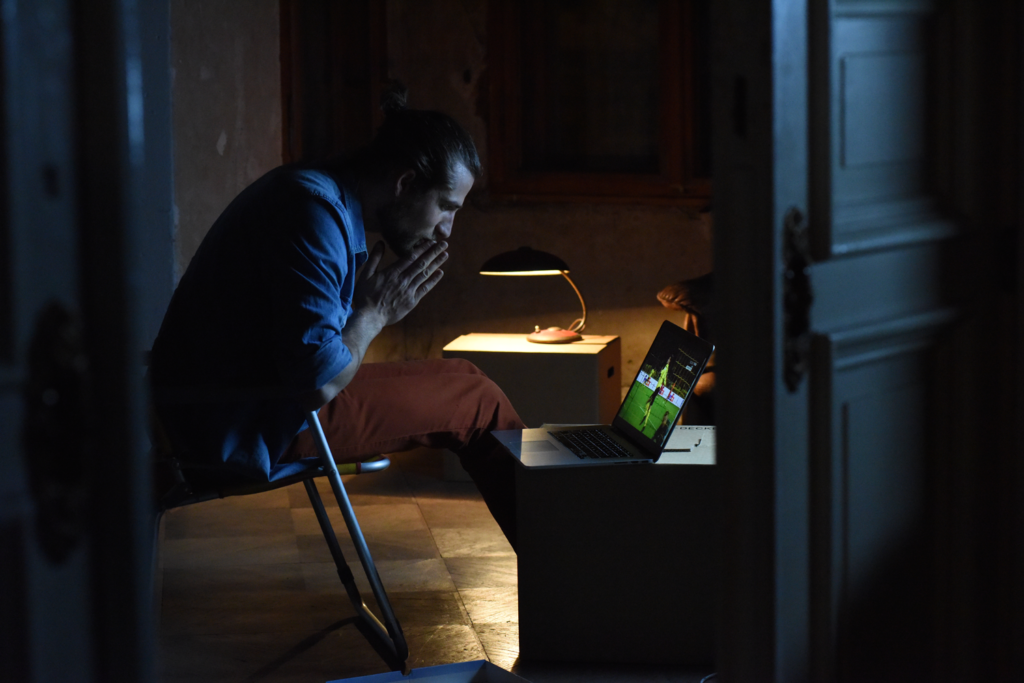Sports OTT: Live Sports Streaming & Video Delivery
You just won the exclusive rights for a highly in-demand football league and are looking to stream the games live for your fan base. Question is, do you have the technology platform for sports OTT to make it a success as your fan base starts to grow and incoming demands increases?
In this blog post we look in detail at the technical requirements you need to consider for sports OTT, and share how at Magine Pro we enable our partners to deliver high quality, low latency streams to audiences around the world.
Media quality & low latency
There are many technical aspects to consider when providing a premium OTT service for sports, and in particular live sports where quality is of the utmost importance. With fast-moving objects, a high bit rate for High Definition from 720p and more is essential with 60 frames per second. This is preferable for big-screen viewing as with 60 frames per second, the transition between each frame is much smoother, which makes fast-moving sports content look frictionless as a result. And as it stands today, anything over 60 frames per second will not make the viewing experience any better.
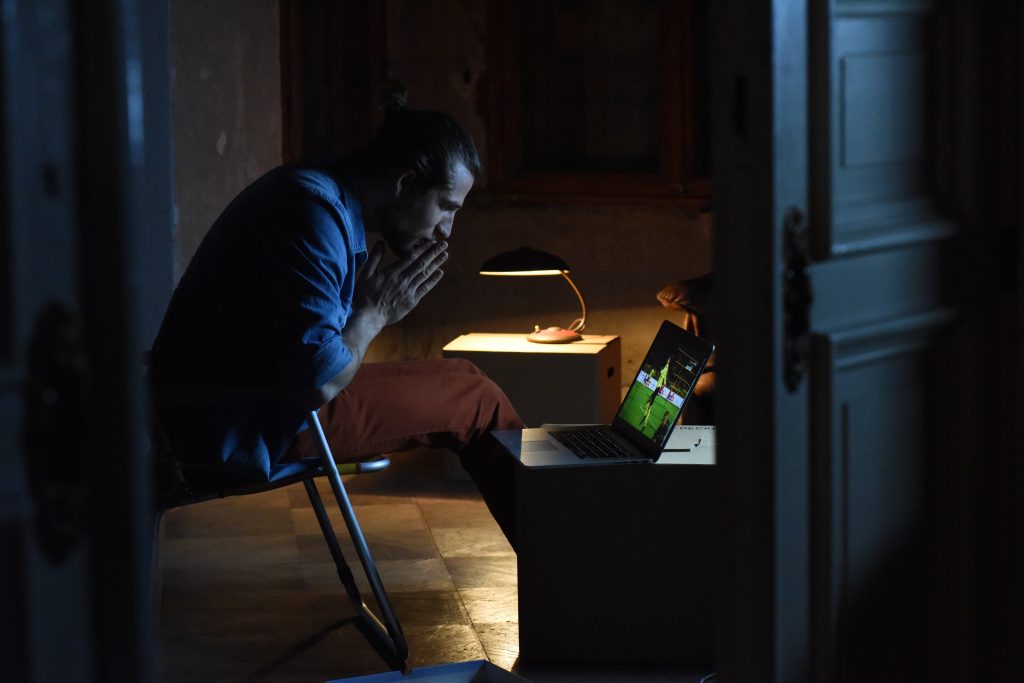
Key areas to consider & address include:
- Assess what effect media ingestion (encrypted transfer), encoding and packaging, and the network have on latency overall
- The choice of media segment lengths
- Using HTML5-friendly streaming technologies as HTTP Live Streaming (HLS) or Mpeg-Dash to give cacheable delivery
- Content delivery networks (CDNs) that can deliver higher volumes with more efficiency
- How the player handles buffering
 Content Security
Content Security
Content owners will invest a lot of resources acquiring media so that they can offer their users the latest live events and an attractive VOD catalogue. Most right holders today also require a certain level of security protection in an OTT platform to be able to acquire content from them. Protecting media from being accessed by unauthorised users involves utilising different tech and methods.
One method is Digital Rights Management (DRM), which can control the distribution of copyrighted works. Before content is streamed it must be encrypted and packaged with a DRM schema so that only authorized users and devices can play it back. At Magine Pro we use Microsoft PlayReady, Google Widevine and Apple Fairplay to do this. We can also enforce DRM key rotation in a given interval to take down any ongoing streams that might have been set up in an untrustworthy way.
The content license agreement you have with the right holder may also specify locations that are unauthorised to access content. Because of this, in addition to DRM protection, right holders also request that OTT platforms deny users access when connecting through banned VPN or Proxy services. At Magine Pro we provide all of the mentioned security techniques above to our partners.
You may also need to look at reducing the number of ongoing streams and devices per user account to maximise revenue intake and eliminating account sharing. This is particularly important when hosting exclusive live events in your service.
Scaling for demand
As your OTT service expands over time you will need to scale to avoid certain drawbacks, including loss of video quality, poor user experiences and increased costs affecting you and your customers. This can be challenging if you haven’t done the engineering work or built in the relevant monitoring.
At Magine Pro we run our OTT platform on AWS, which enables us to scale up and down as we require and pay only for what we use. Working with AWS also means during peaks we don’t need to set an upper user limit or traffic limit because of hardware constraints. This is a big advantage for us and our partners that we build OTT services for.
In an ideal world, you would be able to scale up when demand increases and scale back down when traffic decreases. Sounds easy, but services often require a warm-up before they’re ready to accept incoming requests and traffic. Autoscaling is good, but not great at this.
For live events, especially for pay-per-view, you should pre-provision your infrastructure to manage the exponential rise in traffic when the event starts. Autoscaling often takes many minutes to kick in, however, so it’s better to provision more, and scale down, than not scale up quickly enough.
With pay-per-view events, typically you know how many people have pre-purchased before the event, this early indicator lets you know how much you need to scale. However, you could also see an increase in purchases up to 10-15 mins before the event starts, so you need to build in some headroom to handle that. It can be a good idea to run a pre-event (especially if you haven’t delivered live before) to ensure payment flows are provisioned to handle a potential increase in traffic right before the event begins.
Your service operations team also plays an important role when hosting live events. It’s essential to have clear roles and responsibilities in place and also defined escalation paths, communication & troubleshooting routines between the event distributor and your platform provider.
Service testing & reliability
As an OTT platform service provider, we strive to have high reliability. To achieve this, we need to consider the architecture for high availability, what infrastructure and how we utilize AWS’s cloud infrastructure.
High availability requires more resources, which can compete with our aim for low latency (affected by the number of steps in the end-to-end flow). At Magine Pro, we provide flexibility here for our partners. They can select resiliency levels depending on the value of their content, audience size, live vs Video-On-Demand or accepted down-time.
The starting point is to look at multiple incoming signal paths; from the signal distribution (even down to power suppliers), all the way through to acquisition, transcoders, automatic failover and monitoring tools. Doing this enables us to achieve resiliency and to withstand certain types of failure, yet remain functional from the customer perspective.
Understanding our platform and our partner’s availability needs enables us to design and continuously test our platform using injection patterns. We can take down services to learn how the platform reacts and remains functional from the customer perspective. In this case, we also have simulated end-users or real users in a production environment.
You might think you have high reliability and resilience to handle services going down, but without really testing it you don’t build up a confidence level. We do this testing continuously and monitor the outcome to improve our engineering capabilities, to better handle failures, start-up new services, and to re-balance traffic over to healthy endpoints.
_______________________________________________________________________________________
To find out more about our OTT platform and how we enable our partners to deliver live events, linear and VOD content to audiences around the world head here. On our experience page, you can find out more about our partners and the OTT services they operate.
Get in touch with us if you would like to discuss how we can help you launch a successful sports OTT service or to demo our services.
You can also subscribe to the Magine Pro e-newsletter and/or follow us on LinkedIn to stay up-to-date with our latest news, partners and products.
Luke Boyle talks about the future with DTVE.
Our CCO, Luke Boyle sits down with Stuart Thomson, editor at Digital TV Europe, to discuss the market opportunity for sports streaming, Magine Pro’s offering and ability to serve second tier sports federations in particular through its technology, speed of service and direct to consumer background.
Luke Boyle joined Magine Pro as CCO in August this year. Ex-Neulion SVP, Boyle, brings with him broad experience from the OTT and sports media sectors, and will be responsible for all commercial activities for Magine Pro’s OTT solutions and managed services. Prior to joining Magine, Boyle led successful business development activities across EMEA and APAC at Neulion, now Endeavor Streaming, and has held senior positions in many sports, media and tech companies over his 25 year career.
“I couldn’t be more delighted to join at this exciting stage in Magine’s development. With the team, technology and operational capabilities at our disposal I am confident that we will achieve great success with our partners, both current and future.” says Boyle.
Boyle’s experience and deep market expertise fit perfectly into Magine’s new b2b strategy. “His experience of OTT and the sports market, combined with great executive skills, bring a great deal of value to our partners” says Magine’s newly appointed CEO Matthew Wilkinson who will take over the position from previous incumbent, Ambuj Goyal. Wilkinson has a background in Ericsson where he held different management positions in Europe and Australia.
Watch the interview below and get in touch today to book your own meeting with Luke or the rest of the team at Magine Pro.
Let’s introduce more girls to engineering
On March 29, we welcomed 13 girls aged between 13-19 years old, to our office in Stockholm, as we took part in “Introduce A Girl to Engineering Day” (IGEday) once more. IGEday is a yearly event in Sweden where tech companies and organizations, big and small, open up their offices for girls and non-binary to get a hands-on introduction to the life of an engineer.
IGEday is an initiative by the organization Womengineer, whose goal is to inspire future female engineers with practical learning experiences. Sweden considers itself to be one of the most equal countries in the world, but out of the 120,000 members of “The Swedish Association of Graduate Engineers,” only 28% of the members were women in 2018 (from the report “Teknisk Obalans”). This is why Womengineer believe the annual event “Introduce a Girl to Engineering Day” is a step in the right direction for Sweden’s future.
This year almost 2,000 girls participated in IGEday and more than 120 companies took part, Magine being one of them.
Fabian Miiro, an engineer at Magine, who supported the girls during the day shares his thoughts on the experience: “My favorite moment is definitely seeing the transformation from the ones that start off being… skeptic. They mention they surely don’t know anything about programming. And then, just 15 minutes later they are the ones that say “What if…” and “Oh, let’s try…”. To see that transformation, when someone realizes that they can to do what an engineer does, that is what this is all about to me. Because everyone can be an engineer!”
During IGEday we ventured into the programming landscape and introduced the girls to design, hardware and software, programming Arduinos using a visual programming language based on scratch.
“It was fun to watch the girls challenge claims. For example, they were asked to choose any number, so they chose a number, then they were asked to choose another number, which they did. Then they were asked to choose a new number again; the reason was that the first two numbers they chose were special, so they found out that “any number” in this case meant “any number but those two numbers” – Kadri-Annagret Petersen, Tester at Magine.
Magine is very proud and happy to have been part of IGEday and we strongly believe in its purpose, and as one of our Project Coordinators at Magine, Esther Pino, said: “Anyone can be a programmer or designer, the girls proved it that day!”
Get in touch to find out more about events and career opportunities at Magine.
Introducing True Royalty by Magine Pro
Last week we launched True Royalty, our latest partner service. True Royalty is the world’s first on-demand streaming service devoted to premium royal content. It features documentaries, specials and factual dramas about royals around the world and through the ages – from the British monarchy to the Pharaohs of ancient Egypt.
True Royalty is co-founded and curated by Nick Bullen, one of the best-known producers of programs about the British monarchy, including the BAFTA-winning programme The Queen’s 90th Birthday Celebration and more recently, Meghan Markle: An American Princess. True Royalty also features rarely-seen home movie footage of royals as well as candid interviews and programme exclusives which have never before been shown outside their original broadcast territory.
The service was built to be independently managed and curated by the True Royalty team. Using the Magine Pro Console, True Royalty can ingest new VOD content and live edit the service’s start page, content categories, video asset’s artwork and metadata. The Console also gives them full control of their user accounts, payments, and subscription packages.
The branded SVOD service is based on Magine Pro’s templated Premium solution and includes additional features from our X range. As a Premium X service, we enabled True Royalty to launch with a seven day free trial period and monthly or yearly subscription packages. We also continue to manage their 1st line customer support and give True Royalty direct access to Magine Pro’s platform service database, enabling them to create and produce their own deep data reports and analytics. To find out more about how Magine Pro built and launched True Royalty, check out our case study.
Here’s a sneak peek of the True Royalty service

Find out more about Magine Pro OTT solutions here and get in touch if you would like to find out how we can help you get your own OTT business off the ground!
________________________________________________________________________
Read more about the True Royalty launch:
Vanity Fair
The Guardian
Telegraph
Variety
Daily Mail
Metro
What is a CDN? How Content Delivery Networks Work
Are you thinking of investing in a video streaming service for your content but want to know a little more about the tech involved? You’ve come to the right place. Content delivery networks are an important part of Magine Pro’s delivery architecture and in this post we’ll explain how they work and why they’re essential to an OTT service.
First and foremost, what is a CDN?
A content delivery network (CDN) is a system of servers designed to efficiently deliver content, such as music, images or video, to requesting clients anywhere in the world. To do this effectively, each server houses a copy of the original content, which it can then distribute to users within range. A large-scale CDN will have servers strategically positioned around the globe, enabling people thousands of miles away to access the same great content as quickly as local communities that live close to the original source (for instance a local TV broadcaster).
CDN’s help companies like us to scale up and deliver great content to underserved communities around the world. They also help to ensure a seamless user experience, as the content doesn’t have to travel as far to reach the viewer, so they’re guaranteed quick access, great performance, and minimal latency; all pretty important for us here at Magine Pro.
How do CDN’s work?
We send a continuous stream of video file pieces from our systems to requesting user devices, be it a phone, tablet or laptop, ensuring our users and our partner’s users can watch and enjoy content anytime, anywhere.
Before CDN providers, companies like Magine Pro would operate with only one server (with several big hard drives) and deliver video data over the internet to requesting user devices. However, one computer can only perform so well. Adding more servers to accommodate more users though is inefficient and costly and would require additional internet bandwidth. Buying more computers isn’t the solution. It doesn’t scale well nor does it perform well.
Enter the CDN provider. A content delivery network provider has lots of secure servers scattered across the country (or several countries for that matter) and allow their clients to put copies of their video data (or any kind of data) onto them. For Magine Pro this means that when a user starts watching a video stream, the data is sent from one of these servers instead of our own. Consequently, we’re able to scale up the number of users on our services and our partner’s, without having to worry about scaling out our own central storage servers. And as the CDN is in close proximity to the user, they get a seamless streaming experience.
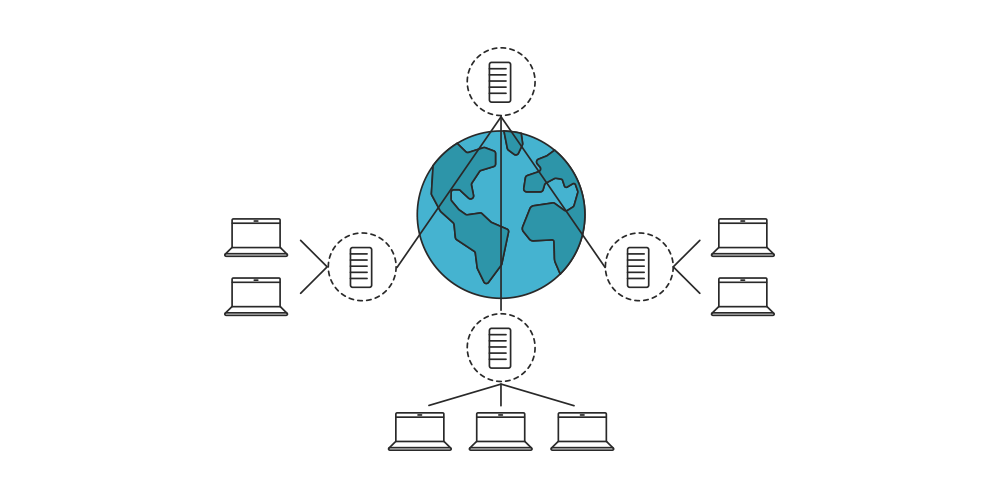
Overview of a Content Delivery Network (CDN)
CDN’s are integral to any OTT service looking to scale and deliver content seamlessly to audiences around the world. If you keen to find out more about CDN’s and how they enable Magine Pro to deliver great content globally, check out our case studies or get in touch!
Introduce a Girl to Engineering: Sign Up Now!
This year Magine Pro is taking part in Introduce a Girl to Engineering Day on March 23rd 2018. It’s an important event in our calendar and gives young girls the opportunity to get hands-on experience in the workplace and learn more about this fascinating career option. We’re inviting girls between the ages of 12-19 to sign up now on the IGE website, please don’t miss this fantastic opportunity!
At Magine, we are proud to employ a diverse mix of highly-skilled engineers and feel it’s important to help to encourage younger generations, and in particular girls, into the field. We will be partnering with Womengineer to host Introduce a Girl to Engineering in our head office in Stockholm.
If you’re a girl between 12-19 and interested in signing up, or know someone that fits the criteria, spread the word! Sign up now on the IGE website by March 2nd 2018.
Introducing Sappa Play by Magine
TV doesn’t have to revolve around the living room, and as we consume more content on mobile devices, it’s no surprise that the demand for quality streaming services continues to rise.
Last month we announced our latest project, a complete TV Everywhere solution for Swedish broadband and TV operator, Sappa. Built on our proven platform, the Sappa Play service delivers live TV and catch-up content to over 50,000 existing Sappa customers.
Hasse Svensson, CEO at Sappa says, “In line with new TV viewing behaviour, we as a company must adapt our customer offerings with a good TV offer for mobile screens.” He adds, “We have evaluated several solutions on the market and finally chosen Magine’s overall solution that will give our customers a great user experience. The implementation of the new service has really gone smoothly, and we can now launch a complete streaming service to our customers before the summer. ”
Leveraging our experience in the consumer market and the latest streaming technology (not forgetting our talented team), we’re able to provide Sappa with a secure and scalable solution that’s cost effective, user-friendly and available on all multiscreen devices; supporting the web, iOS and Android.
Here’s a sneak peak at the Sappa Play service:
The Sappa branded interface includes features such as rewind on live TV and catch-up functionality, not forgetting a fluid EPG that enables users to scroll through the timeline (past and present) to discover what’s on.
To find out more about the Sappa Play project, check out our case study or get in touch to chat.
Additional Links
Download Sappa Play iOS | Download Sappa Play Android | Watch TV via Sappa Play web
Video Interview: Ambuj Goyal, CEO of Magine
Last month, Magine attended MIPCOM in Cannes, a hotly anticipated event in the television industry calendar. For those not in the know, MIPCOM is a global market for entertainment content, and as such, brings together content creators and distributors from around the world.
It was a great opportunity for us here at Magine to announce our latest partnerships and talk more about the TV Superhighway, which is breaking down global distribution barriers to make television accessible to audiences everywhere. In fact, Magine’s CEO Ambuj Goyal spoke exclusively with Digital TV Europe about the TV Superhighway concept and our plans to create a frictionless content economy. Check out the full interview below to find out more.
Live Channels v VOD
The channel is dead, long live the channel.
I have a confession to make. When I left Channel 4 ten years ago, to join BT at the start of its journey into television, I thought that with the advent of video on demand (VOD) the channel could eventually be dead. It was already clear at that time that consumer behaviour was changing, as new tech was enabling viewers to watch the content they wanted, when they wanted, on multiple devices in and out of the home.
Today, in the march to digital distribution and with the continued global expansion of OTT services such as Netflix and Hulu, many content owners and broadcasters, including HBO (HBOGo), NBCU (Hayu), Disney (DisneyLife), Sony (Animax), are asking the same question and exploring complementing, and in some cases substituting, their channels with a VOD proposition. In doing so they are raising fundamental questions about their business model. Should they go direct to the consumer (who they haven’t traditionally had a relationship with) and bypass platforms, and should they monetise via pay subscriptions or through advertising?
Ten years on and with the benefit of working at the forefront of OTT TV with Magine, my view on whether the channel is dead is rather different and more nuanced. My conclusion is that channels are still relevant in a digital world of OTT and here are five reasons why I think this is the case:
1. CHANNELS ARE SOCIAL
Viewers like to watch programmes that are socially relevant, whether it’s watching an event with friends at the same time such as live sports or watching a programme they can talk about and share with others later on. The schedule of a channel helps create a mass social experience. While it is attractive to be able to binge watch series via SVOD, if no one else is watching and you cannot talk or share your views on the programme it can feel isolating.
2. WE ARE LAZY AND LIKE BEING TOLD WHAT TO WATCH
Ever been in a restaurant, and while leafing through the menu you wish the head chef would come out and recommend what to eat? Viewers still like being guided by an editor, the art of scheduling and commissioning is not lost. In this scheduled environment we also like being surprised and watching programmes we hadn’t otherwise thought about watching.
3. LIVE IS STILL KEY
Live events such as sport or talent shows work best on channels. They help create, build and share the tension, joy and passion of this programming. Advertisers also value the mass reach and ability to connect to large audiences at the same time.
4. MILLENNIALS STILL LIKE TV
While younger generations consume a wider range of media, TV is still popular. It may not be as dominant a media as it is for older generations but it’s still one of the most important, they just consume it differently, on multiple devices and in multiple locations.
5. TIMESHIFTING MAKES CHANNELS STICKIER
There are a lot of programmes viewers prefer to watch live but they also want the freedom to watch something 30 minutes to two hours later or even the next day. A cloud-based TV service, like Magine TV, enables users to pause, start over, and catch up on programming in and out of the home.
The fundamental challenge for TV is not the channels themselves but discovery. The way in which viewers select channels and programmes hasn’t really changed in the last twenty years, as all the innovation has gone into the delivery and discovery of VOD. When we lived in a world with four or five channels there was limited choice but it made things easy, in a world with hundreds of channels and lots of choices, finding the right programme can be frustrating. In an increasingly image-rich world, most viewers still have to scroll through a list of channels on their EPG to find something they want to watch. At Magine, we are looking at new ways to engage the viewer and help them discover live content, simple options like enabling customers to scroll through pack shots of live programmes as well as VOD, and allowing them to add reminders and create a ‘Lineup’ of live and VOD programmes to watch.
The response of many, although not all broadcasters, has historically been to create apps that separate VOD from the channel experience. In some apps, the channels were not even present or they became an afterthought to the consumer experience. This seems strange when the viewer only really cares about great programming, and they typically prefer all their favourite channels in one place.
Here at Magine, we’re attempting to solve these challenges for our customers and our partners. For broadcasters and customers, a lot is at stake. In the UK, c.£4.3bn in advertising revenues and £6bn in subscription revenues is derived predominantly from linear channels, and broadcasters are investing c.£6.4bn per annum in content. In Germany, a similar picture emerges with c.£5.3bn in ad revenues and £5.85bn in subscription fees from channels. In comparison, while Mintel suggests that the UK streaming video subscription revenues will rocket from £437m to £1.17bn between 2014 and 2019, even with the growth in SVOD revenues, it is clear that the continued success of channels will be key to maintaining the overall level of content investment in the ecosystem.
Broadcasters have invested a lot in content over the years so there is some fantastic programming out there, it’s just a case of improving the user experience and making it easier for the viewer to find what they want to watch. However, as broadcasters rush to create their own VOD apps they effectively create a walled garden around their content, making discovery harder, not easier for the viewer. It also seems unlikely that the consumer will want so many apps on their devices. In a digital world where there’s a larger choice of channels, catch-up, SVOD, there is significant value in aggregating and simplifying the experience so viewers can find content via one app.
At Magine, we believe that OTT can complement and reinforce existing business models rather than tearing them down and that channels can sit alongside VOD in the digital world.
Content Piracy: Where there’s no will, there’s no way
In America during the 1950s, there were regular sessions of a body named the House Un-American Activities Committee. These sessions were like TV series in themselves in that nobody really knew what was going to happen in the next episode.
Content-wise they really shouldn’t have had much to do with film and TV at all, but they did, and in one of these sessions they hauled up screenwriter doyen, Dalton Trumbo, to ask him what his position was on the so-called Hollywood blacklist. It seems he answered, “At the top of it I think”.
Wit under pressure is a testament to the man’s talent, but after they’d jailed him he found it tough to put his talent to work, and as a result, he became one of the first victims of piracy and actually promoted it himself. He worked out that the only way he could earn a living was to secretly write stuff like Roman Holiday and Spartacus, then let other people steal the scripts so he could split the booty when they were picked up by Paramount, MGM and the Academy Awards jury. Only in America? Perhaps, but it was a sad time for artists like Trumbo, as well as for the US.
Maybe not surprisingly for a country blessed with peerless storytellers, its people can turn their commercial hand to any writing at all. For example, the growth area I’ve been struck by most recently, centres around their car-bumper stickers. These now no longer limit themselves to telling you whether you are in the Sunshine, Peach or Wonderful Life State but they now also impart 10-word shards of insight that leave you wondering who is laughing at who. Best of the current bunch is the one on the back of those mirrored-steel trucks and SUVs, which burn up the plains from east to west. It reads: “Well, at least the war on the environment is going well…”
A cracker, you’ll agree.
But it’s no less fun back in television. There are times when the topic of piracy in TV gives rise to the same kind of end-of-days comedy, and this is all the harder to understand when you consider that audiovisual piracy accounts for billions in lost revenues in the TV business, and that’s just in the US. Season six of Game of Thrones has just ended and it’s hard to imagine what the Iron Bank’s iron-faced managers would say if they knew that twice as many people had illegally watched their mythically expensive series for free, as were watching through good old premium pay TV (approx average cost for a package containing the series: €50+). It would probably be something like, “My office at 9 o’clock sharp, Mr HBO. And bring your leaky technology partner with you”.
The problem gets worse not better as HBO and others wriggle to compensate for the losses: either the consumer price of pay-TV packages rises, with the €100 summit long-since scaled; or it fragments into indecipherable programme quantums, which add up to more than that; or it just gives itself another complicated promotional twist and generally gets people’s backs up. Nothing creates a thief faster than an unjust price for bread, and likewise, nothing gets a pirate reaching for the nearest illegal website faster than a programme they feel they’ve got a right to see but can’t.
There are times, we have to admit when our industry looks like it’s really trying to go the way of private medicine and high street banks – that is, convert itself into the product nobody wants to pay for but sometimes has to. If you think back to when Sky kicked off their coverage of live events at the end of the 1980’s there was a definite belief that they had improved the viewer experience and dragged some of our quaint old sports into a new digital era of spanking images and wall-to-wall emotion – think The Masters, The Ashes, The Champions League. And in the process, they seemed to make their 50 quid a month asking price sound like a favour to the armchair viewer. No complaints there – we were happy to pay for that, weren’t we?
Fast forward though to the cash-strapped modern fan recoiling in horror at suddenly having to pay not one, but two subscriptions to follow just one team in one league. What are we financing now, they ask? Some kid’s third or fourth Maserati?
And to add to this general queasiness, TV viewing has changed at quite a pace, with TV viewers now on the move more than ever, and wanting to take their programming with them. Whether it’s in the garden, on the bus, away to their student flat or just on holiday. But whatever the direction they move in, they don’t want to trouble their minds with rights, device restrictions, SD not HD, or messages which tell them, “Not available on this brand new TV set”. Basically, they have no truck with any of the industry pillars which operators like Magine have to help keep in place in order to keep their word to the programme makers.
It seems that right now, viewers have already made that self-justificatory journey which tells them, “I already pay enough for TV shows – I am perfectly within my rights to steal this programme”. Hence we get rampant piracy, led by the most innocent in the class – our kids.
But is there any real will to tackle this? OTT operators like Magine have spent tens of millions on technology to track TV usage and to protect programming. On top of that, we have poured our admittedly entrepreneurial efforts into clearing rights with every artist in the food chain, from the Hollywood studio to the composer of the credits sequence ditty. And yet legal, monetizable viewing via the internet is still forced to jump through a thousand unlikely hoops by the same content creators/producers/distributors. Why is this? OTT may have the tools to tackle piracy and return most of the lost billions, but there just doesn’t seem to be the will to let them do it yet. Or at least to help them do it by pursuing with the same bite, the TV operators who just take signals without asking, or don’t give guarantees on content protection. Try doing that with water, electricity or even a hotel coat-hanger.
Meanwhile, with the passive acquiescence of most of the interested parties (creative, industrial, governmental), millions of viewers either take out satellite subscriptions in countries where they do not live or copy and share programmes daily. Or just find a website that does it all for them. Lets call it a fully-turned blindness of the eye rather than active permission, but it goes on. Because after all, a pound is a pound. Except that right now, it is illegal and left unchecked it pulls apart the broader process which creates and produces the programmes we watch.
It seems the EC may normalise part of the modern viewer’s behaviour by allowing some sort of rights portability between member states. Hats off to them as a public organisation for doing that. But they could be held up by the tricky issue of how to track usage accurately and therefore keep an eye on where – and for how long – viewers are stretching their TV watching rights. Are we on a two week holiday in Ibiza or did we move there in 1992? And if we did, should it matter if we pay our license fee in our country of residence?
The slightly weird thing is that with OTT technology and cloud-based rights management, there is no need for this TV twilight zone to exist, or for pirates to be actively encouraged by abusive or incomprehensible pricing. Magine (and perhaps others) can block illicit viewing down to the accuracy of a postcode. And can allow it where it has been properly paid for, either via license fee or subscription. With a simple flick of the ‘cloud switch’, British viewers would be able to watch the BBC on holiday in Amsterdam and Americans, the NBC in Abu Dhabi, and they would not infringe a single law, upset a single local operator, or deprive a single artist of their due reward. It’s just about precision rights management and the will on the part of the content owners, to back it.
And what are current operators doing to rein in those galloping piracy stats that are making off with their revenues and their partner’s programming? Well, if you were to judge purely on results you’d have to say that whatever it is, it’s not working. The BBC is about to end a two-year ‘consultative process’ to license its channels to OTT operators. Whatever went on in that vast investigative exercise it came up with the idea that restricting mobile devices to in-home viewing would be a good idea. To describe this as swimming upstream would be an insult to salmon everywhere – is there any chance at all of a viewer understanding why their tablet stops showing a programme when they walk outside? Or why they can’t tune in on 3G if the coffee shops wifi is down or a bit slow. Start doubling the piracy stats.
Netflix, on the other hand, originally prided themselves on easy access and a simplified pricing model which they claimed was reducing piracy from 20% to an acceptable 7%. We would share their pride if the story stopped there. In fact, what they were really doing was allowing subscribers to access their content anywhere in the world, via VPNs and proxies, with all the viral effect that had on sales. They then took steps to block this illegal practice, but only when it started to mess with their new licensing business, which lo and behold, was actually making more money for them through selling rights to broadcasters territory by territory – the very system they set out to ‘liberate’ us from with their binge-when-you-want approach.
Why did content owners not push them to plug this leak before, as an OTT distributor like Magine would be forced to do? The easy answer is because some operators really were OTT in what they were paying for those rights. And there is no difficult answer.
In other words, the rights holder’s position was, ”The billions I’m losing to piracy is already written off, and anyway it isn’t quite as important this year as the €100M I can get right now on my shift to make the numbers square up. And if I’m crafty with the PR, the local broadcaster (who’s also bought my series for stacks of cash) will blame piracy, not me….”
So they sup with the devil and give the can a hearty kick down the internet highway. But then, in the end, some poor soul has to pay for this and that will be the viewer who still follows the rules. It will always be those who fork out unthinkingly each month who foot the bill, whether it’s because they don’t miss the money because they believe it’s a fair price, or simply because they have never knowingly broken the law and feel uneasy about doing it.
And anyway, it isn’t all gloom, is it? The Aereo case in the United States showed that it is possible to act against operators who access content without the permission of the owner. Except that, it is just one case which has not been applied yet to any similar cases outside the US.
So the message you can begin to glean from this is; don’t be too sympathetic when you read that by midnight on Monday the 25th April, just 21 hours after the latest Game of Thrones premiered, 10 million illegal downloads of Episode One had been detected just in Australia. Because the truth is, nobody very big is really that worried about it yet, and if you are a pay TV subscriber, you’re the one paying for it anyway.
And so the operators hope that while you are pitying them as you would a friend who’d just been burgled, you won’t notice that your subscription price has just taken a hike upwards. There really are no free lunches in this and the unspoken digital rule is that a worldwide, virally-marketed piracy business can do wonders for the visibility and future sales of a product. High-profile, globally simultaneous releases have just sexed-up the challenge. Cool pirate captains the world over, now want to ‘watch-it-for-free and chill’.
So while enough remaining viewers continue to pay inflated prices for their rigid TV package and while nobody feels like backing legitimate OTT solutions to track their content properly we can all rest easy and look forward to getting a consolation sticker on next month’s pay TV bill. Something like “At least the war on piracy is going well”.

